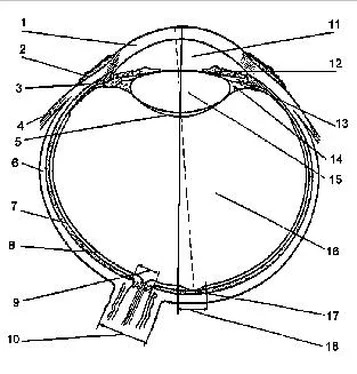(2) Take a final deep breath.
(3) Settle into a minimum arc of movement.
e. “READY ON THE FIRING LINE.”
(1) Partly release the breath and hold the remainder.
(2) Point of focus is on the front sight.
(3) Take up the slack — apply initial trigger pressure.
(4) Maintain sight alignment.
f. Target faces toward shooter - commence firing.
(1) Start positive trigger pressure.
(2) Shift concentration to perfecting sight alignment.
g. First shot is fired (Surprise Shot).
(1) Maintain eye focus (follow through).
(2) Quick recovery with the sights approximately in alignment, and hold approximately in center of aiming area.
(3) Renew positive trigger pressure.
(4) Strive to correct errors in sight alignment, but do not delay positive trigger pressure.
h. Follow through with four more surprise shots.
i. Good rhythm indicates coordinated application of the fundamentals.
Complete and instantaneous shot analysis is a prerequisite for improvement in performance or score. It is a complete waste of time and ammunition to fire haphazardly without any comprehensive attempt to improve. A mental impression of the sight alignment should come at the instant the shot breaks.
It is advantageous to analyze why you are shooting well on a particular day. Some shooters have a tendency to ignore their good scores. It is important to analyze the good shot string so the combination of factors that produce these good strings can be remembered and repeated. In making the analysis, an important point to remember is to be honest with yourself and your coach. By admitting mistakes the shooter can correct them. The coach can help find a solution to mistakes which he was not aware of if you reveal everything you saw, heard or thought of during the firing of the shot or string.
If any shooter critically re-examines and analyzes his performance and his technique of shooting, he will find “minor points”, which to a certain extent hinder him from improving his results. The elimination of individual shortcomings and poor methods are the method the shooter has at his disposal to increase his competitive stature.
1. Slow Fire
a. Steps:
(1) Call each shot. Base your call primarily on the relationship of the front and rear sight. Also consider any unusual occurrences in the arc of movement and whether or not concentration on sight alignment was maintained.
(2) When you have decided where your shot should be located on the target, verify your call by observation with the spotting scope.
(3) If the shot or call is good or bad, determine the cause. Generally one of the following situations will occur:
(a) Shot call and shot location coincide and you have a good shot.
(b) Shot call and shot location coincide, but shot is bad.
(c) Shot call and shot location do not coincide.
NOTE: ANY TIME YOU FAIL TO RECOGNIZE THE ERROR, YOU MUST EXAMINE YOUR PLAN TO MAKE SURE YOU HAVE NOT NEGLECTED A FUNDAMENTAL.
(4) Evaluation: Now consider the question — Did you or did you not follow the planned sequence? If your answer is yes and you had an acceptable shot, this should stimulate your confidence. Review the technique you used to deliver the successful shot. Make every effort to reestablish the same conditions that existed for the first controlled shot and repeat the sequence for each succeeding shot. If your answer was no, you must identify the specific point in your shot sequence where control was lost. The following examples cover only a few of the errors that may have occurred:
(a) Failure to establish a minimum arc of movement.
(b) Inability to maintain point focus on sight alignment.
(c) Concentration drifts from sight alignment to trigger control.
(d) Trigger pressure intermittent and uncertain with considerable effort required to fire the pistol.
(e) Lack of aggressive, determined attitude, and confidence in the technique.
b. The shooter’s slow fire work sheet lists the following steps as a guide to complete shot analysis:
(1) Follow through check.
(2) Call shot (describe sight alignment).
(3) Compare target hit location with shot call.
(4) If shot or call is bad, determine cause.
(5) Watch for error pattern to form. (Same error on more than one shot)
(6) Did shot break in normal arc of movement?
(7) Did you hold too long?
(8) Did you apply positive trigger pressure?
(9) If you benched weapon on a shot effort, why?
(10) Did you lose concentration? (What did you think about other than sight alignment?)
(11) Did you get a surprise shot break?
(12) Were you worried about results?
2. Strings of Five Shots:
After each five shot string, the shooter should remember each shot as one of five individual sight alignments that enables him to accurately call the shot group. If the call and the group are not together it is necessary to determine the cause and apply positive correction. If the group is not centered then the weapon isn’t zeroed, the position was bad or the grip incorrect. If the shooter is sure of the zero of his weapon, then quickly check out the position and grip before firing the next five shot string. Look for one of the five following situations to occur. (It is possible however, for two or more of the situations to occur in one string.)
a. Shots off call and grouped within ability to hold, but not centered on target.
b. Shots on call but group larger than normal holding ability and may or may not be centered on target.
c. Shots off call, group larger than holding ability and may or may not be centered on target.
d. Shots on call grouped within ability to hold, but off center on target.
e. The shooter’s rapid fire worksheet lists the following steps as a guide to complete shot group analysis:
(1) Follow through the proper recovery checkout.
(2) Shot group call (describe five individual sight alignments).
(3) Compare group location with call.
(4) If shot group or call is bad, determine cause.
(5) Did you get a surprise break on each of five shots?
(6) Was the first shot fired on time?
(7) Was rhythm maintained throughout string including last shot?
(8) Did all shots break in normal arc of movement?
(9) Did you apply positive trigger pressure on each of five shots?
(10) Did you lose concentration during string? (What were you thinking of)?
(11) Did you ignore minor errors in hold?
(12) Were you worried about results?
F. POSITIVE CORRECTION (If Necessary)
1. After a shot analysis, corrective measures have to be incorporated into the shooter’s performance if the error is to be avoided on the next shot. Slipshod analysis, if any, is usually compounded by the absence of corrective action. Without analysis and corrective measure, improvement is at an end. The shooter who has not learned what he is doing wrong, or what to do about it if the trouble is found is lost and will never excel.
2. Corrective measures prevent the recurrence of poor performance and must be immediately applied. Much has been written about why we shoot poorly; however, it is just as advantageous to analyze why you are shooting well on a particular day. It is more helpful to know the right way to perform than to have your mind cluttered with a multitude of “don’t”. Coaches in particular should concentrate on and emphasize the positive factors.
3. Look for, analyze and correct mistakes every time a shot is fired.
4. There must be agreement on corrective measures between coach and shooter. The coach must explain the reasons for specific corrective measures recommended.
G. USING ADDITIONAL AIDS TO ORGANIZE A SYSTEM OF SHOOTING
Читать дальше












